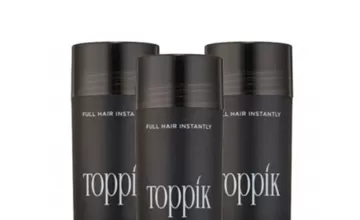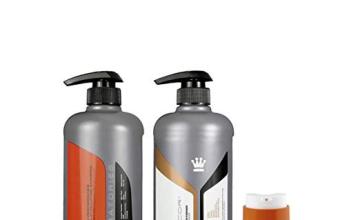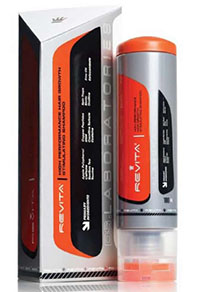Dr. Timothy Carman



Hair loss is a universal condition, affecting all ages, races, genders and nationalities. It’s estimated that “androgenetic alopecia,” or male and female pattern baldness affects 35 million men and 21 million women in the United States alone. This section examines how race, age and gender affect hair loss.
In physiological terms, human beings are all composed of the same bones, muscles, and everything else down to the cellular level. But there are specific differences.
Hair, in all of its variations, is one area in which human beings display their differences. Hair follicles can widely vary in terms of color, length, shape, thickness, strength and various other factors.
There are many ethnic groups to consider. But we will focus on the special considerations of Asians, Blacks (of African descent) and Caucasians.
Asian people typically have very straight hair. Their scalps contain fewer hairs per square centimeter, they actually have a lower hair density than that of Caucasian hair follicles. But because the individual hair follicles of East Asians are thicker, this gives the look and impression of greater hair density.
For these reasons, hair restoration techniques for East Asians, much like other races, must be sensitive to a variety of anatomic and cultural differences. For instance, East Asian females often have an increased likelihood of developing “diffuse alopecia,” or hair that thins evenly over the entire head than Caucasian females.
Even though it’s not a definite requirement, it’s very helpful for Asian patients to seek out doctors with experience in Asian hair.
Another consideration for East Asians considering hair restoration surgery is the increased chance of developing keloid scars. A keloid is a thick, irregularly shaped and elevated scar with uncontrolled growth that results from excess fibrous skin tissue. East Asians typically have a greater likelihood of keloid development than Caucasians, but less than that of people of African descent. Therefore, before undergoing surgery, East Asians may want to consider being medically evaluated for keloids.
People of African descent usually possess naturally curly hair. This curly hair gives the visual impression of increased hair density for a given amount of hair, which is beneficial in hair restoration surgery.
The hair follicles beneath the skin of people of African decent also typically curve more than Caucasians. This can make harvesting the donor hairs, without severing or transecting the hair follicles beneath the scalp, more difficult. A hair restoration physician needs to be very aware of this difference and adjust to its requirements.
As in the case of East Asians, people of African descent possess some unique hair and skin characteristics. Some of these medical conditions are more common in black skin than in white skin. This may increase the risk for post-surgical complications.
Those of African descent have a higher chance of developing keloid scarring when injured. This in turn leads to a greater chance of noticeable donor scars. Keloids aren’t a widespread problem. But those with a history of them are carefully evaluated in regard to their existing scars. The evaluation usually involves a small "test procedure" to determine if there’s a normal healing rate.
Another issue is that of postoperative skin discoloration. With darker skin, there’s often a greater risk of both increased and decreased skin color after injury or surgery. These risks can be determined by the patient’s medical and family history.
Ingrown hairs are also a more common problem in darker skin. If a patient has a history of ingrown hairs or other minor skin infections, this may signal a higher risk for ingrown hairs post-hair restoration surgery. Again, this risk can be determined by a small test procedure.
Caucasians (white people) may have a wide range of hair and skin types. However, if someone has dense and or coarse hair, as well as skin color similar to their hair color, they will generally achieve the best results for a given amount of restored hair.
Learn more about aging and gender hair loss

Of all the hair loss concealers available, like topical powder applications or "sprinkle solutions," Toppik is amongst the most popular. What's more, of all the "shaker" options currently available to hair loss suffering men and women, Toppik is one of the most recognized and trusted.
Since its inception, Toppik has been featured in various media outlets, including Time magazine, the Oprah Winfrey show, Fox News, NBC, and Eyewitness news. Throughout this media exposure and positive word of mouth, this hair loss product has been utilized by an estimated 3 million balding men and women worldwide. So what makes Toppik so popular? How does it work? How does it compare to other types of concealers? Most importantly, what are real consumers saying about Toppik and where can interested parties purchase this popular concealer?
Toppik, like many other concealers available today, is a topical powder application. The powder formula is comprised of a series of charged, keratin-based, "hair binding fibers" that, when sprinkled on thinning hair, tightly adhere to individual hair strands. With each "shake" of the Toppik product, thousands of these particles are applied to the head and bind to hair shafts via opposing electrical activity (much like the way magnetized material attracts metal).
By tightly binding to hair shafts in such significant numbers, Toppik naturally recreates the appearance of a thick, dense head of hair. According to the makers of Toppik, the bond created by the hair shaft and keratin particle is so strong that it will withstand wind, rain and perspiration, and will continue to naturally thicken and volumize the hair until "washed out" by shampoo. Additionally, because Toppik is available in a variety of different tones, the product is able to precisely match any hair color/texture and still remain completely undetectable.
Although Toppik is popular and well known within the hair restoration community, hair loss sufferers should still ask one crucial question: what benefits does Toppik offer over other, similar concealers? According to the manufactures, Toppik offers a variety of benefits that other, comparable products simply cannot match. First, Toppik's keratin fibers are completely safe, organic, all natural, and utilize electric energy to adhere to hair fibers with unmatched efficacy.
Next, not only is Toppik available in a variety of colors, but these tones can also be "mixed" to match any color and can even cover gray hair and new growth from hair transplant surgery. Toppik colors include black, dark brown, medium brown, light brown, medium blonde, blonde, auburn, gray and white.

Furthermore, Toppik can be used in conjunction with other hair styling products (though the powder needs to be applied to dry scalp, and styling products should be applied before usage), will not "rub off" on clothing or pillows, can be safely utilized with other hair restoration products and medications, will not clog pores or dry out the scalp, is equally effective in balding men and women, and is easily applied via the shaking method or by applying the popular "spray applicator" to the shaker apparatus.
Because of its innovative design, positive "track record," ease of use, and effective nature, Toppik has developed a trusted reputation and large fan base in the hair restoration community. Hair loss sufferers not only trust the history behind the Toppik brand, but appreciate the product's single use longevity and lasting strength of the fiber-hair shaft bond. The fact that the product is effective for male and female hair loss sufferers and can be easily used with other styling and hair restoration products makes Toppik an even better option for any individual considering a topical concealer.
To see what real hair loss suffering men and women are saying and to read helpful tips about applying Toppik in a variety of situations and in conjunction with other hair loss treatments, visit our Hair Loss Forum and Social Community. You can also read our product review by visiting "Product Review: Nanogen Versus Toppik".

 The new and revolutionary Revita Shampoo has all the right stuff to stop DHT and promote healthy hair growth. Revita contains the proven DHT inhibitor ketoconazoleand vitamins and minerals essential for nourishing and cleansing the scalp and hair, including the same copper peptide technology included in Tricominproducts.
The new and revolutionary Revita Shampoo has all the right stuff to stop DHT and promote healthy hair growth. Revita contains the proven DHT inhibitor ketoconazoleand vitamins and minerals essential for nourishing and cleansing the scalp and hair, including the same copper peptide technology included in Tricominproducts.
This product includes a 6 ounces or 180ML bottle with 1% of the active ingredient ketoconazole. To view the clinical abstract proving the effectiveness of ketoconazole in the treatment of androgenetic alopecia, view Ketoconazole as a hair loss treatment.
Unlike Nizoral, the revolutionary Revita shampoo can and should be used daily. Revita leaves your scalp and hair feeling great daily with no signs of dryness or flakiness. It's also a magnificent volumizing shampoo, promoting maximum fullness.
Men and women sometimes suffer from hair loss for different reasons. Thus, diagnosing its cause is necessary to facilitate and promote proper treatment.
Don't expect immediate results. It's recommended to use Revita in conjunction with proven treatments for at least 6 to 12 months before determining its effectiveness. Documenting your progress with bi-monthly photos can help you determine whether or not Revita has been successful in helping you maintain existing hair.
Hair shedding is a common symptom the first few months and a sign that Revita may be working for you. It's crucial to push past this stage with continued use for the recommended period of time.
To date, only surgical hair restoration is proven to grow hair in completely bald areas. You are invited to have a free virtual consultation with one of our prescreened hair restoration physicians.
Apple PolyphenolProcyanidin B2 & C1
Copper Peptides
Spin Traps
Ketoconazole
Rooibos
MSM
Caffeine 4%
Carnitine Tartrate
Amino Acids
Emu Oil
Biotin

ElectroTrichoGenesis (ETG), also known as Cosmetic TrichoGenesis (CTG), is a little known hair loss treatment that makes some very lofty hair growth claims. How does ETG work and is it really clinically proven to treat androgenic alopecia(genetic balding)?
ETG is promoted as a safe, painless and non-intrusive. Treatment is administered via an “ergonomically shaped couch with a semi spherical hood” manufactured by Current Technology Corporation in Vancouver, Canada.
The patient reclines on the chair and the hood (with disposable liner) is placed over the head but does not make contact with the scalp. This special hood contains electrodes that deliver “specified pulsed electrostatic energy” delivered passively to the scalp by the low-level electric field generated within it.
ETG is believed to stimulate the regrowth of hair through the positive influence of the pulsed electrostatic field it generates. This field is said to stimulate “changes within the hair bulge and the follicle, stabilizing hair loss and stimulating new hair growth”. Patients receive a single 12 minute session weekly.
The following three studies on the efficacy of ElectroTrichoGenesis (ETG) as a treatment for thinning hair have been published in peer-reviewed journals:
Maddin, W. Stuart; Bell, Peter W.; James, John H. M. (1990).
"The Biological Effects of a Pulsed Electrostatic Field with Specific Reference to Hair Electrotrichogenesis". International Journal of Dermatology29(6): 446–450.Benjamin, Benji; Ziginskas, Danute; Harman, John; Meakin, Timothy (2002).
"Pulsed electrostatic fields (ETG) to reduce hair loss in women undergoing chemotherapy for breast carcinoma: A pilot study". Psycho-Oncology11(3): 244–248Maddin, WS; Amara, I; Sollecito, WA (1992).
"Electrotrichogenesis: further evidence of efficacy and safety on extended use". International Journal of Dermatology31(12): 878–80
According to the 36-week comparative, controlled study conducted on male subjects at the University of British Columbia and published in The International Journal of Dermatology, 96.7% of those treated experienced cessation of hair loss and/or hair regrowth. Decreased hair loss was seen as early as 4 to 6 weeks but many patients required more time for results.
The pilot study conducted on women undergoing chemotherapy for breast carcinoma and published in Psycho-Oncology,showed that twelve out of 13 participants had good hair retention throughout the chemotherapy period and afterwards with no reported side effects.
As with the clinically proven medical hair loss treatments Rogaine (minoxidil) and Propecia (finasteride), ETG is said to be most effective in the early stages of balding.
Although the data put forth in this article seems to paint ETG as a clinically proven and highly effective hair loss treatment, it’s important to note that the procedure is not new. The studies referenced above were published more than 13 years ago. If ETG truly works to stimulate hair growth and suppress the advancement of hair loss, why has it not become a fixture in the world’s leading hair restoration clinics? Where are all the glowing, unbiased reviews?
With no reported side effects, there may be no harm in giving ETG a try if there is a provider in your area and the fees are reasonable. However, balding men and women are encouraged to consult with an experienced and reputable hair restoration physicianin order to diagnose the cause of their thinning hair and learn about the outstanding medical and surgical options available today.


Many popular hair loss treatment options today such as Provillus, Procerin, and Avacor contain the “active” ingredient saw palmetto. It can also be purchased as a standalone supplement in most nutritional stores. But the age old question of whether or not it can effectively treat baldness in men and women with alopecia is still heavily debated. By taking a look at the scientific evidence available we are able to draw some conclusions as to its potential benefit for those with thinning hair.
Saw Palmetto berries are a deep red fruit that grow wild on palm trees in warmer climates, typically found in the Southeastern United States. The liposerolic berry extract is typically used as an herbal supplement for the promotion of a healthy prostate.
Similarly to finasteride (the active ingredient in Propecia and Proscar), studies have shown that when taken orally, it may be an effective anti-androgen by lowering dihydrotestosterone (DHT) levels in the body by blocking 5 alpha-reductase enzymes. Additionally it is said to block receptor cites on cells which is required for cells to absorb DHT.
Tests have also been performed on its use in the treatment of benign prostatic disease, which similarly to androgenic alopecia, depends on the production of DHT.
It is also noteworthy to state that a small preliminary study in 2002 was performed as reported by The Journal of Alternative and Complementary Medicine(2002;8:143-52) that shows a select group of 19 men between the ages of 23 and 64 taking either (400mg of saw palmetto and 100mg of Beta-sitosterol) or a placebo orally. Those who took the herbal combination had 60% improved hair growth over those who took the placebo. There have been no studies to date indicating the efficacy of saw palmetto applied topically for male pattern baldness, female hair loss, or anything to date.
In our opinion, there are two potential difficulties with this study:
But if there are no current standards on dosages of herbal medications in the United States, how do these popular hair loss treatments produce an appropriate dosage?
Clinical studies on Benign Prostrate Hyperplasia (BPH) have used a dosage of 320mg of the berry extract daily (either one 320mg pill or 2 X 160 mg pill). A daily dosage of 480 mg of saw palmetto berry extract was not found to be any more effective in a six-month study. If the entire berry was used, up to 1000mg or 2000mg would be required to reach the same goal.
The theory therefore is that if saw palmetto can successfully treat an enlarged prostate similarly to finasteride, it can effectively treat hair loss with a similar dosage Many popular “baldness cure” products contain approximately 1500mg of the berry which is equivalent to approximately 240-320mg of the berry extract.
One false assumption is that “all natural” treatments don’t have potential side effects. It is stated that use of saw palmetto has not proven to be safe for women with hair loss during pregnancy and lactation. Medical supervision is suggested for women of childbearing age. Similar warnings are listed about Propecia.
Based on some anecdotal evidence, saw palmetto is said to treat baldness because of its tendency to act like finasteride by helping those suffering from BPH. However, authentic clinical studies have not been performed to date that support this claim. Dosage and how it should be used (orally or topically) therefore is based on conjecture rather that scientific evidence.

This hair loss product, meant for women, is a synthetic form of Progesterone, a hormone and steroid that occurs naturally in the ovaries. The body uses the Progesterone treatment to control a variety of functions. These include the regulating of the menstrual cycles, anticancer properties, the slowing and prevention of bone loss and ensuring the female sexual organs’ health. Another important function of Progesterone is to maintain the hormone balance of estrogen.
But in regards to hair loss, Progesterone treatment is an effective DHT-inhibitor. However, there has not been much research conducted as to Progesterone’s impact to male and female pattern baldness (MPB, FPB). What research was conducted showed that it may be effective at stopping hair loss, but not at hair regrowth.
Nevertheless, topical Progesterone has been used by some European dermatologists in Europe to treat MPB and FPB. For this, they only used 1% or 2% topical concentrations, and no more than 40mg a day. Researchers believe that higher doses could cause menstrual irregularities.
Topical Progesterone is available as capsules, vaginal creams and suppositories. Patients use the medication by rubbing it into the body’s soft areas, such as the breast, abdomen, inner thighs and the palms of the hands (which is thought to be the most effective area).
It’s advised that women use about 1/8-1/2 teaspoon, once to twice daily, for 21days. Physicians also advise women to stop using the medication for 5-7 days each month. They also advise women to change the application areas periodically.

 Rogaine for women is the most recommended treatment for hair loss on the market for women today, and the only FDA approved and clinically proven treatment available for female hair loss sufferers.
Rogaine for women is the most recommended treatment for hair loss on the market for women today, and the only FDA approved and clinically proven treatment available for female hair loss sufferers.
Note: Despite what the insert says, Rogaine works just as well for frontal hair loss, recession, and thinning hair.
This product includes the original 2% minoxidil solution manufactured over 15 years ago. While it only reports a 46% success rate as opposed to the 5% liquid solution's 64% and the foam's impressive 85%, Rogaine for women reduces the possibility of unwanted side effects, including the unpopular unwanted facial and body hair growth.
Rogaine works by stimulating the hair follicles and revitalizing them. This sometimes stimulates the regrowth of miniaturizing hairs, promoting a thicker and fuller appearance of hair.
Rogaine for women is a good starting point for women with thinning hair. While it's not as effective as the 5% liquid solution or Rogaine foam, the possibility of side effects are reduced. Thus, women may want to start small and work their way up to the more advanced Rogaine solutions.
Don't expect immediate results. Just as hair loss is a slow process, regrowing it is too. Thus, it's recommended to use Rogaine for approximately 6 to 12 months before determining its effectiveness. Documenting your progress with bi-monthly photos can help you better evaluate the results.
Hair shedding is a common symptom the first few months and a sign that the medication may be working for you. It's crucial to push past this stage with continued use for the recommended period of time.
To date, only surgical hair restoration is proven to grow hair in completely bald areas. You are invited to have a free virtual consultationwith one of our prescreened hair restoration physicians.

The exciting new Rogaine foam has undergone its own extensive FDA trials and can rightfully boast an impressive 85% hair regrowth success rate in people who use it twice daily. This is more than 20% higher than the liquid 5% minoxidil solution at 64%. Rogaine foam also comes without the inconveniences of its liquid counterpart such as scalp irritation, flaking, and messy application. The foam dries almost instantly as opposed to the liquid's 15 minute waiting period.
Note: Despite what the insert says, Rogaine works just as well for frontal hair loss, recession, and thinning hair.
Rogaine foam uses versafoam technology to aid the delivery of the minoxidil to the hair follicles. As the minoxidil absorbs into the scalp, it stimulates follicles, revitalizing them, promoting thicker and healthier hair growth. This promotes a thicker and fuller appearance of hair.
While Rogaine foam is supreme in many ways, it's unlikely to regrow thick terminal hair in completely bald areas. For best results, men ought to consider combining Rogaine with Propecia (finasteride), the only FDA approved and clinically proven DHT inhibitor to stop hair loss. See the "recommended treatments" section below for more details.
Don't expect immediate results. Just as hair loss is a slow process, regrowing it is too. Thus, it's recommended to use Rogaine for approximately 6 to 12 months before determining its effectiveness. Documenting your progress with bi-monthly photos can help you better evaluate the results.
Hair shedding is a common symptom the first few months and a sign that the medication may be working for you. It's crucial to push past this stage with continued use for the recommended period of time.
To date, only surgical hair restoration is proven to grow hair in completely bald areas. You are invited to have a free virtual consultation with one of our prescreened hair restoration physicians.